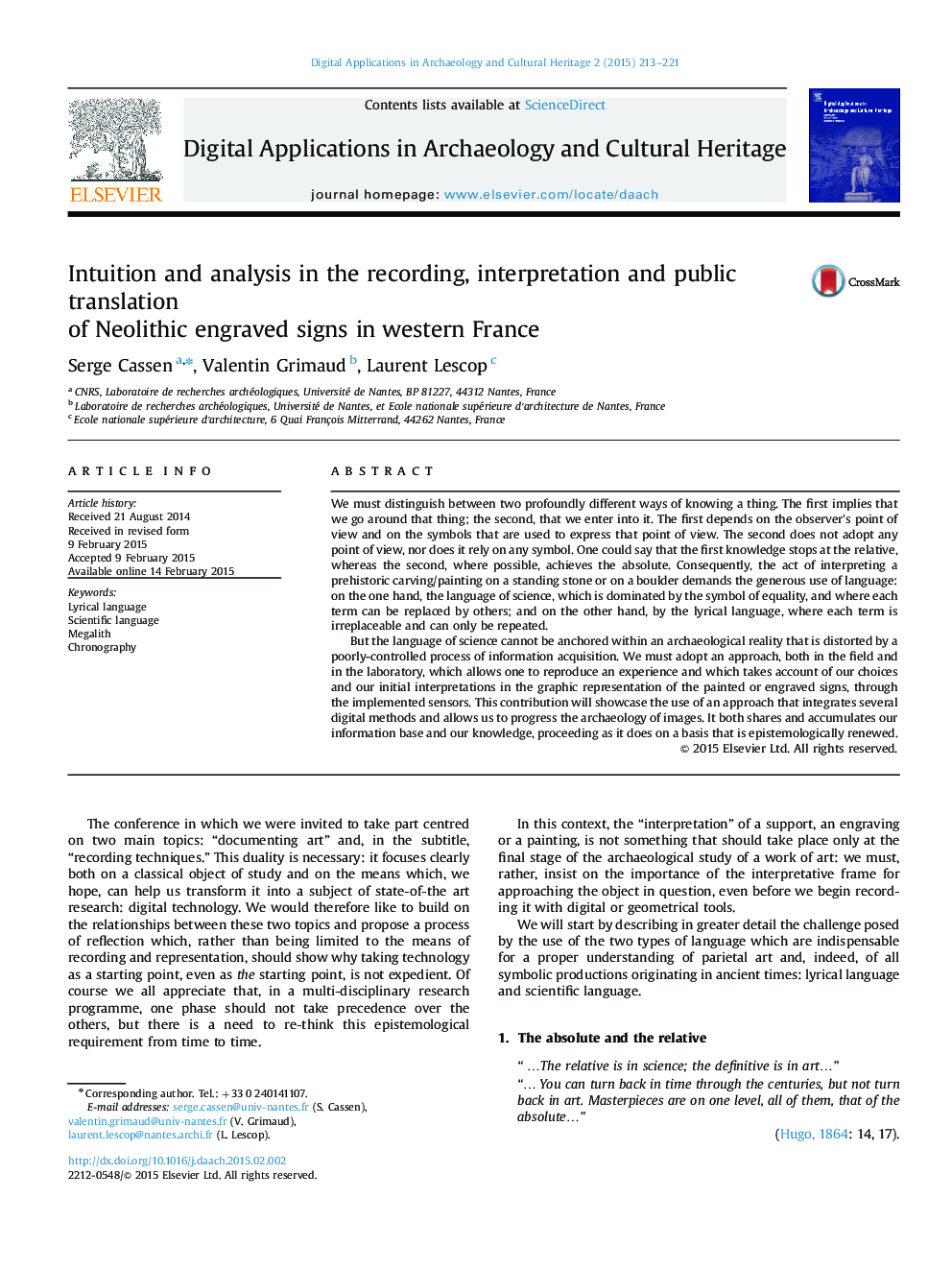| کد مقاله | کد نشریه | سال انتشار | مقاله انگلیسی | نسخه تمام متن |
|---|---|---|---|---|
| 108051 | 161835 | 2015 | 9 صفحه PDF | دانلود رایگان |
• The archaeology of images embraces the absolute and the relative.
• The study of parietal art mobilises both intuition and analysis.
• Lyrical language and the language of the sciences are not incompatible.
• Recording techniques must refer to the relevant interpretative frame.
• Any technique should aim to achieve a chronography of the signs.
We must distinguish between two profoundly different ways of knowing a thing. The first implies that we go around that thing; the second, that we enter into it. The first depends on the observer׳s point of view and on the symbols that are used to express that point of view. The second does not adopt any point of view, nor does it rely on any symbol. One could say that the first knowledge stops at the relative, whereas the second, where possible, achieves the absolute. Consequently, the act of interpreting a prehistoric carving/painting on a standing stone or on a boulder demands the generous use of language: on the one hand, the language of science, which is dominated by the symbol of equality, and where each term can be replaced by others; and on the other hand, by the lyrical language, where each term is irreplaceable and can only be repeated.But the language of science cannot be anchored within an archaeological reality that is distorted by a poorly-controlled process of information acquisition. We must adopt an approach, both in the field and in the laboratory, which allows one to reproduce an experience and which takes account of our choices and our initial interpretations in the graphic representation of the painted or engraved signs, through the implemented sensors. This contribution will showcase the use of an approach that integrates several digital methods and allows us to progress the archaeology of images. It both shares and accumulates our information base and our knowledge, proceeding as it does on a basis that is epistemologically renewed.
Journal: Digital Applications in Archaeology and Cultural Heritage - Volume 2, Issues 2–3, 2015, Pages 213–221
